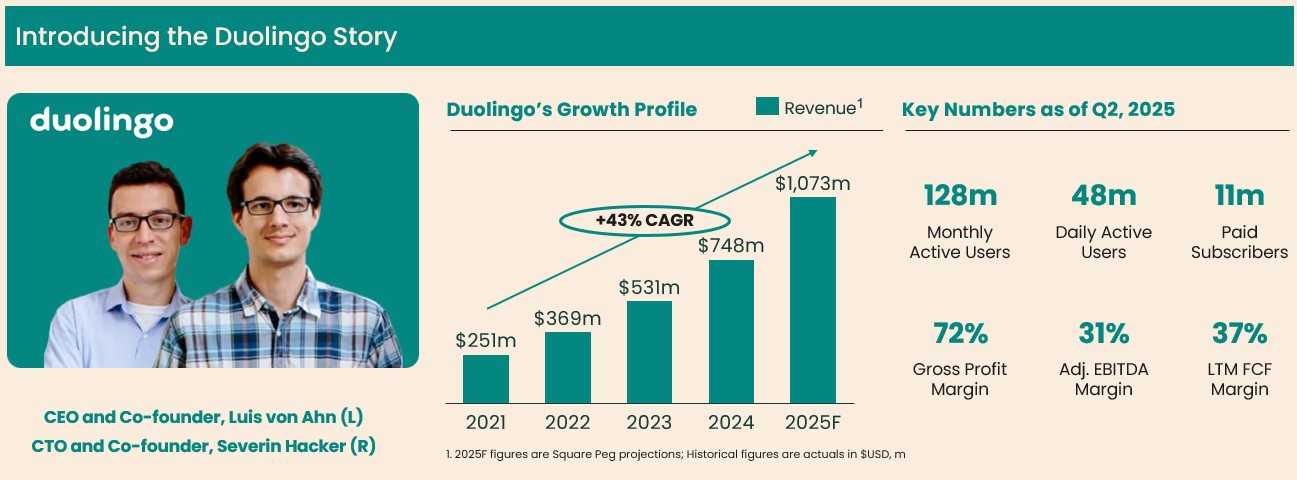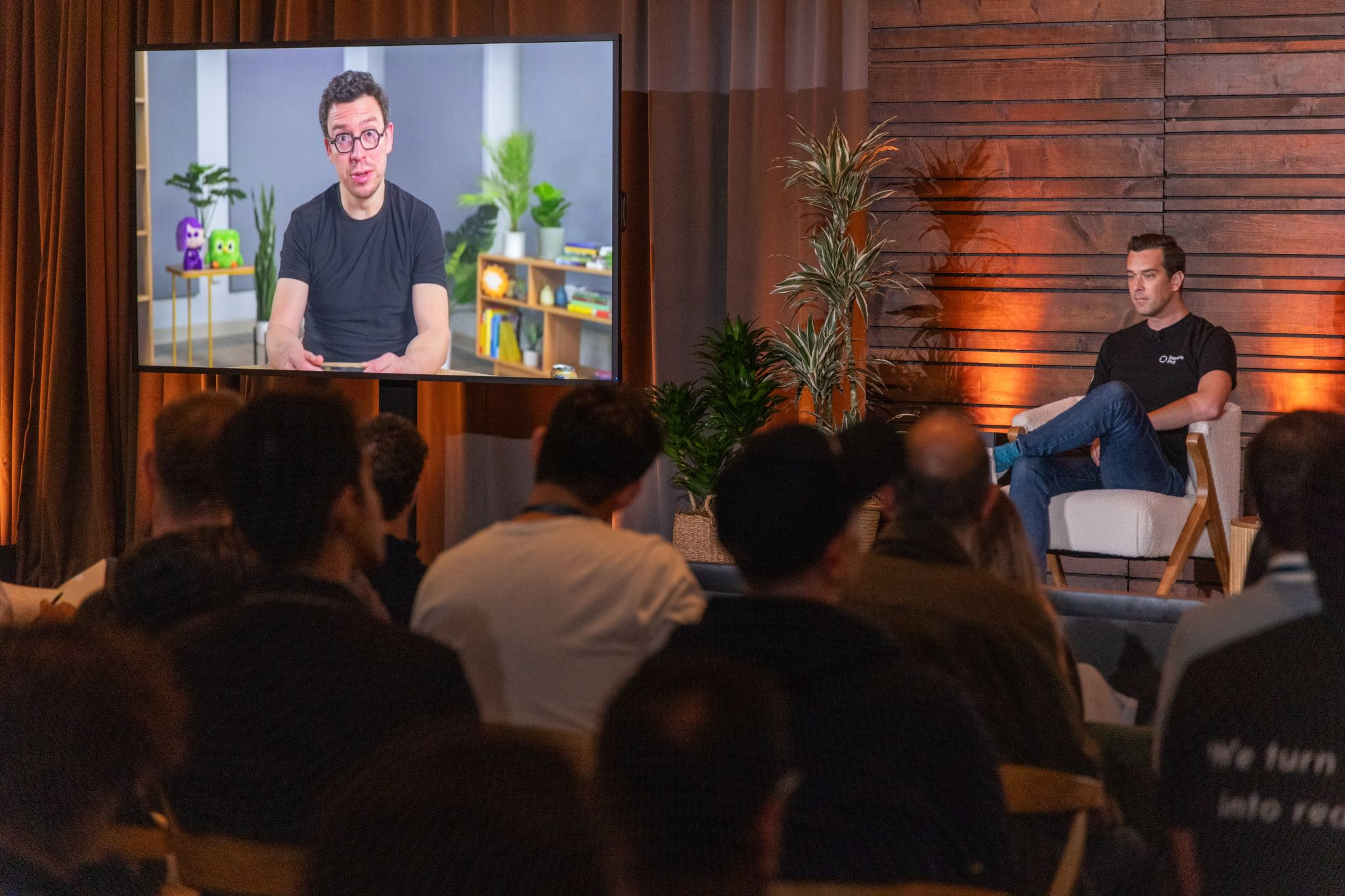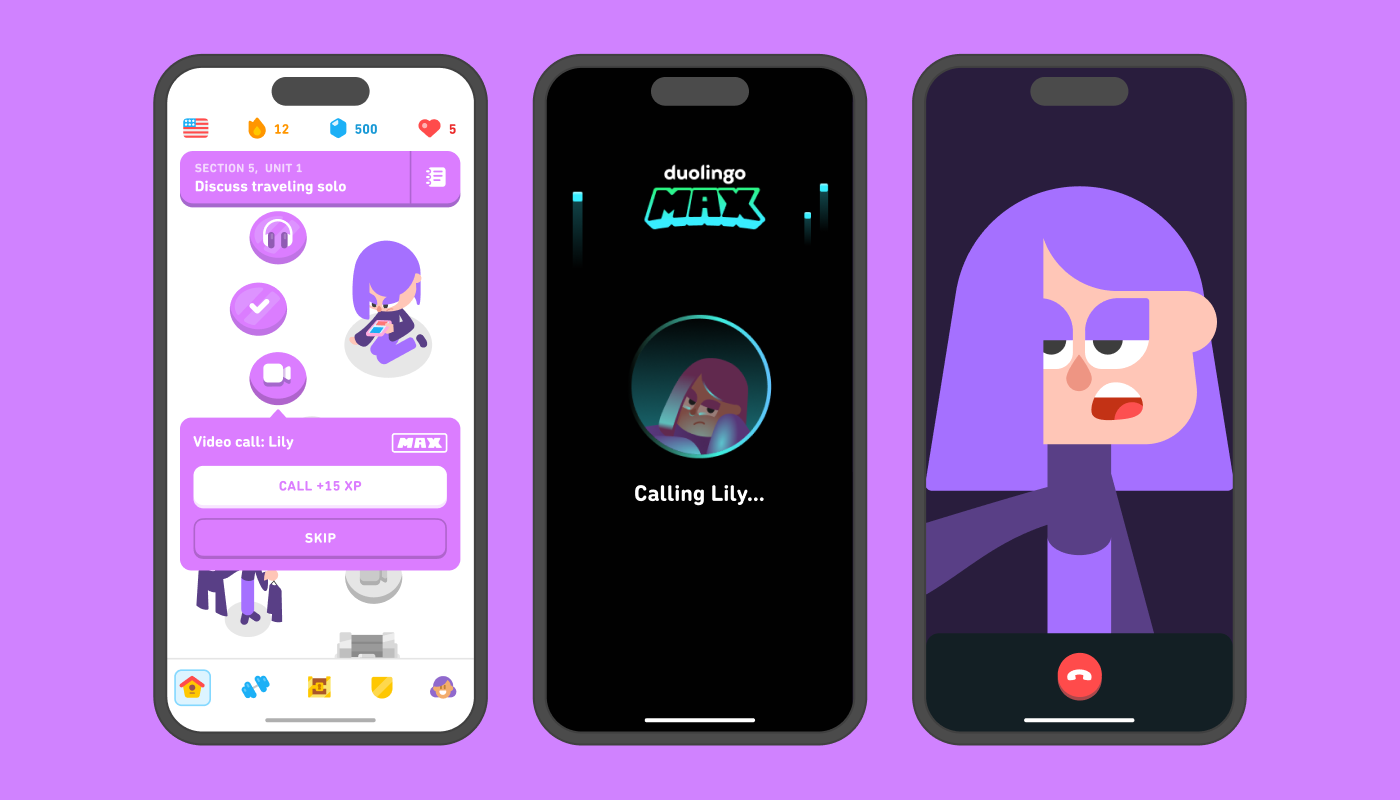Each day, more than 47 million daily active Duolingo users are reminded to not break their language-learning streak (or, on occasion, threatened to “Learn Spanish or Vanish”) by the company’s iconic green owl, Duo. This scenario exemplifies the core mechanic at the heart of the company’s growth: making learning a fun, habitual daily activity. In this article we will be covering the following:
- Duolingo’s founding story, mission and breakthroughs in habitual learning
- Our investment thesis, focusing on the company’s inter-related growth levers
- Why we believe AI is a tailwind, and not a threat, for Duolingo
Duolingo’s Founding Story

Luis von Ahn, a computer science professor and co-inventor of CAPTCHA, and Severin Hacker co-founded Duolingo in 2011, driven by a belief that access to education, and in particular English language skills, can transform lives. This conviction was rooted deep in Luis’ own experiences growing up in Guatemala where access to English skills opened the doors to an American education.
Duolingo’s mission is to develop the best education in the world and make it universally available. Its first product iteration was so virally popular that between its private beta in late 2011 and launch in 2012 it had accumulated a waiting list of 500,000. Early attempts to monetise through crowdsourced translations were abandoned that year after limited success and the company doubled down on making its free offering the best it could be and raised venture funding.
Duolingo’s early viral success owed in part to its small, cross-functional teams structured around key performance metrics (like retention and daily use) and a culture of constant experimentation. The teams ran thousands of A/B tests to optimise the metrics they owned and looked to best practices from mobile gaming. Breakthroughs came with the introduction of features like daily goals and streaks that reward users for completing a lesson every single day. Missing a day meant losing your streak – a psychological nudge as powerful as any classroom deadline, and the key insight was that driving a daily habit amongst its user base was the most powerful tool to retain users and drive their learning. In 2017, the company began to monetise through a subscription tier, advertising and an English proficiency test.
Duolingo’s Multiple Levers of Growth
Duolingo was one of the earliest investments of Square Peg’s Global Tech Fund in 2021, made recently after the company went public, and one of our strongest performers in the years since. From an investment perspective, consumer businesses are often more difficult to build and manage - whether it's acquiring or retaining customers or maintaining a durable moat.
For us, this means that within the consumer space we focus on identifying businesses that have recurrent revenue characteristics, deep customer relationships based on a love for the product and genuine and expanding defensibility.
What drove our original investment thesis and enthusiasm for Duolingo’s long-term potential was the hidden quality of its growth model, which is a combination of (a) the vast majority of user growth coming from word-of-mouth-led acquisition and (b) high rates of re-activation of past subscribers and amongst its large ‘free’ user base - consistently around 50% of “new” subscribers are reactivated. This dynamic has allowed Duolingo to scale much faster and for much longer than expected, despite having high headline churn rates on its subscribers.
We think this can continue - and these characteristics are what we look for in other consumer businesses we have invested in like Spotify, Canva, Wise and Cash App. In Duolingo’s case there is no one ‘silver bullet’ that has driven the company’s growth trajectory, but rather a combination of inter-related growth levers working in unison driven by the relentless execution of its founders and team.
Luis is very much the heart and soul of the company. He is a focused, hands-on people leader who puts the company’s vision at the forefront of decision-making and drives the culture of fast-paced experimentation.

Duolingo Co-Founder and CEO Luis von Ahn and Square Peg Global Tech Fund Portfolio Manager Ben Hensman in a fireside chat, sharing learnings with Square Peg’s founders Founder Summit 2024, San Francisco
We have built and maintain conviction in the following four growth levers:
Lever 1: Driving top of funnel growth by embracing the zeitgeist and viral marketing
Duolingo’s formidable cultural presence and social-media savvy continuously feed the top of its user funnel, bringing net new and re-activating language learners to the app. The brand’s cheeky, meme-worthy marketing – exemplified by its mascot Duo – has made it a breakout star on TikTok (16.7m followers with recent viral video examples here and here) and Instagram (4.6m followers, with recent viral video examples here and here).
Duolingo boldly inserts itself into the zeitgeist at moments that most resonate with its potential users: for example, when Netflix’s Squid Game sparked global interest in Korean culture, Duolingo collaborated on a themed campaign with Netflix (complete with a billboard takeover bringing a humorous slant to Squid Game’s menacing themes) and saw usage of its Korean course jump ~40% within two weeks.
Over the past years, the owl mascot has popped up everywhere from co-branded Crocs to showing up on stage at a Charli XCX concert – always in service of keeping the brand at the resonant forefront of internet culture. This sort of virality dramatically lowers the cost of top of funnel engagement and brand awareness: a recent tongue-in-cheek stunt in which Duolingo pretended to “kill off” its owl generated 1.7 billion social media impressions. Of course, there are risks to a focus on viral marketing and staying culturally relevant - most notably in May this year when an internal memo about AI was published online and sparked a Gen Z backlash on its social media pages which the company has learned and re-emerged from.
An important aspect of Duolingo’s sustained top of funnel user growth is how much of the addressable learning market they are unlocking. Approximately ~80% of Duolingo users weren’t learning a language before engaging with the app, indicating the company has expanded the addressable market of language learners by developing a fun, engaging and globally accessible product. Duolingo is the largest player in the language learning market, taking share through being a significantly better solution for users than substitutes (from in-person tutors to competing online tools)
Lever 2: Driving engagement through behavioural design and constant experimentation
.png)
Once users are in the door, Duolingo’s product design works to turn casually interested downloaders into long-term, habitual learners.
The app is structured like a game, with bite-sized lessons, points (XP), levels, and constant feedback. Streaks are a cornerstone: they gamify persistence by keeping a running count of consecutive days learned, giving users a tangible incentive to return every day. This mechanism has proven powerful – there are over 10 million users with a 365+ day streak and users who reach a seven-day streak are three times more likely to subscribe.
A core part of our conviction in this being a repeatable muscle for Duolingo is the combination of the company’s culture of constant experimentation with its structuring of cross-functional teams around the key metrics they need to drive. Two examples of this include:
- Health mechanics: Duolingo recently experimented with revamping its ‘health system’, the critical mechanic that determines how long free users get to play before they are prompted to upgrade or served with ads. The latest experiment replaced the old “Hearts” system (which penalised mistakes by locking users out after a certain number of errors) with a new “Energy” mechanic that regenerates through practice and rewards consistent effort. The result? In A/B tests, Energy drove increases in daily active users, time spent learning, and even conversion to paid subscriptions during its rollout
- Social mechanics: Duolingo leverages friendly competition and social features to deepen engagement – over iterations the app has let learners join leagues to compete on XP, a feature to follow friends, and even the ability to nudge each other in-app (complete with haptic feedback when you nudge a friend, as a playful touch). All of this is wrapped in Duolingo’s signature humor and delightful design: characters cheer or flex triumphantly when you get a hard answer right, and Duo himself might shed a tear if you miss a day.
By making learning fun and rewarding, Duolingo mitigates the biggest challenge in self-directed education – ongoing motivation. Higher engagement rates, in turn, directly fuels the business: the more days a user opens the app, the more chances they’ll see value in upgrading to a paid tier (or be content to view ads). In essence, Duolingo has created a self-reinforcing loop: viral marketing brings people in, and an engaging product keeps them coming back.
Lever 3: Driving monetisation through product innovation

The third growth lever is Duolingo’s evolving business model is relentless product innovation, which monetises its engagement.
The company operates on a freemium model: anyone can learn for free (supported by ads), but a significant and growing percentage subscribe. Just after its IPO in Q3 2021, Duolingo reported having ~2.2m paid subscribers; since then the number of subscribers has grown at an impressive 49% CAGR to 10.9m now, at the end of Q2 2025. This has been driven by continuous enhancements to its subscription offerings. The standard Super Duolingo plan removes ads and adds perks like unlimited hearts, and more advanced practice, while the newest top-tier Duolingo Max ups the ante with AI-powered features for a higher price point.
Duolingo Max uses generative AI to offer features like Roleplay and Video Call, which lets users practice conversations with AI-powered versions of the company’s characters (e.g. a conversation in French with the purple-haired Lily - pictured above) which effectively gives subscribers a personal AI tutor and real-time spoken conversation practice, interwoven with Duolingo’s 13+ years of mastering habitual learning.
The result is a faster-growing uptake of subscriptions to Max and higher average revenue per user (ARPU), adding price to user growth as a key lever.
Lever 4: Driving habitual learning beyond language
.png)
Duolingo has been broadening its platform beyond the core of language learning, leveraging its gamified learning expertise in new domains.
In recent years Duolingo has rolled out Math and Music courses that bring the habitual learning formula to other disciplines.
In April 2025, the company launched a Chess course, marking its first foray into teaching a non-academic skill. The chess course became Duolingo’s fastest-growing product launch ever, surpassing 1 million daily users by the end of the quarter. These new subjects expand Duolingo’s addressable market (pulling in users who might be more interested in Math or Chess than in learning a new language) but also represent an expansion of the ecosystem and cross-sell/bundling opportunities within its user base. A language learner might try the Math course and vice versa, improving the business’ engagement and retention flywheel.
Duolingo’s strategic flexibility in adding new habitual learning verticals shows the strength of its core engagement mechanic in disciplines beyond language learning to retain users and grow its TAM.
Artificial Intelligence: A Tailwind for Duolingo’s Mission, Not a Threat
Many have wondered whether advances in AI-powered translation (like real-time speech translation being made available in headphones) could reduce the need for language learning in general, and for Duolingo in particular.
Luis offers a compelling rebuttal: he believes Duolingo’s learners generally fall into two broad groups.
- First, a huge segment are people learning English – where a real-time translator won’t cut it for passing a job interview, test or assimilating in a new country.
- The second are people learning other languages as a hobby or personal interest - similiar to chess, computers have been better than humans at playing chess for decades, but millions of people enjoy the act of improving at chess all the same. Likewise, many Duolingo users learn languages for the joy of learning, the cultural connection, or the cognitive challenge; instant translation doesn’t satisfy those human motivations.
We believe Duolingo is playing offence and accelerating its mission with AI, leveraging new capabilities to extend its current sources of advantage. We recently met with Duolingo’s Head of AI, Klinton Bicknell, in New York and see the company making strides with AI across three vectors:
- Personalisation of the user experience: Providing users with live tutoring via video call and real-time personalised feedback simply wasn’t possible prior to developments in generative AI.
- Content scaling: AI has unlocked a step change in how productive it can be in developing and scaling content for its users; Luis recently explained “Developing our first 100 courses took about 12 years, and now, in about a year, we’re able to create and launch nearly 150 new courses”.
- An AI-first philosophy: Internally, Duolingo is embracing AI across the organisation and the full breadth of workflows, and is already unlocking significant efficiency benefits.
While the AI landscape can shift rapidly, Duolingo by all metrics is extending its lead in language learning and opening new markets by making its core mechanic of habitual learning both more effective and more scalable.
We look forward to sharing more about the company and its founders as it continues its growth journey.
Duolingo is available for download on iOS and Android
Want to learn more about Square Peg's Global Tech Fund or explore investing?
Read more about our strategy to back founder-led businesses in the public markets, as well as our investment philosophy. Click here to contact Square Peg Investor Relations.

.svg)


